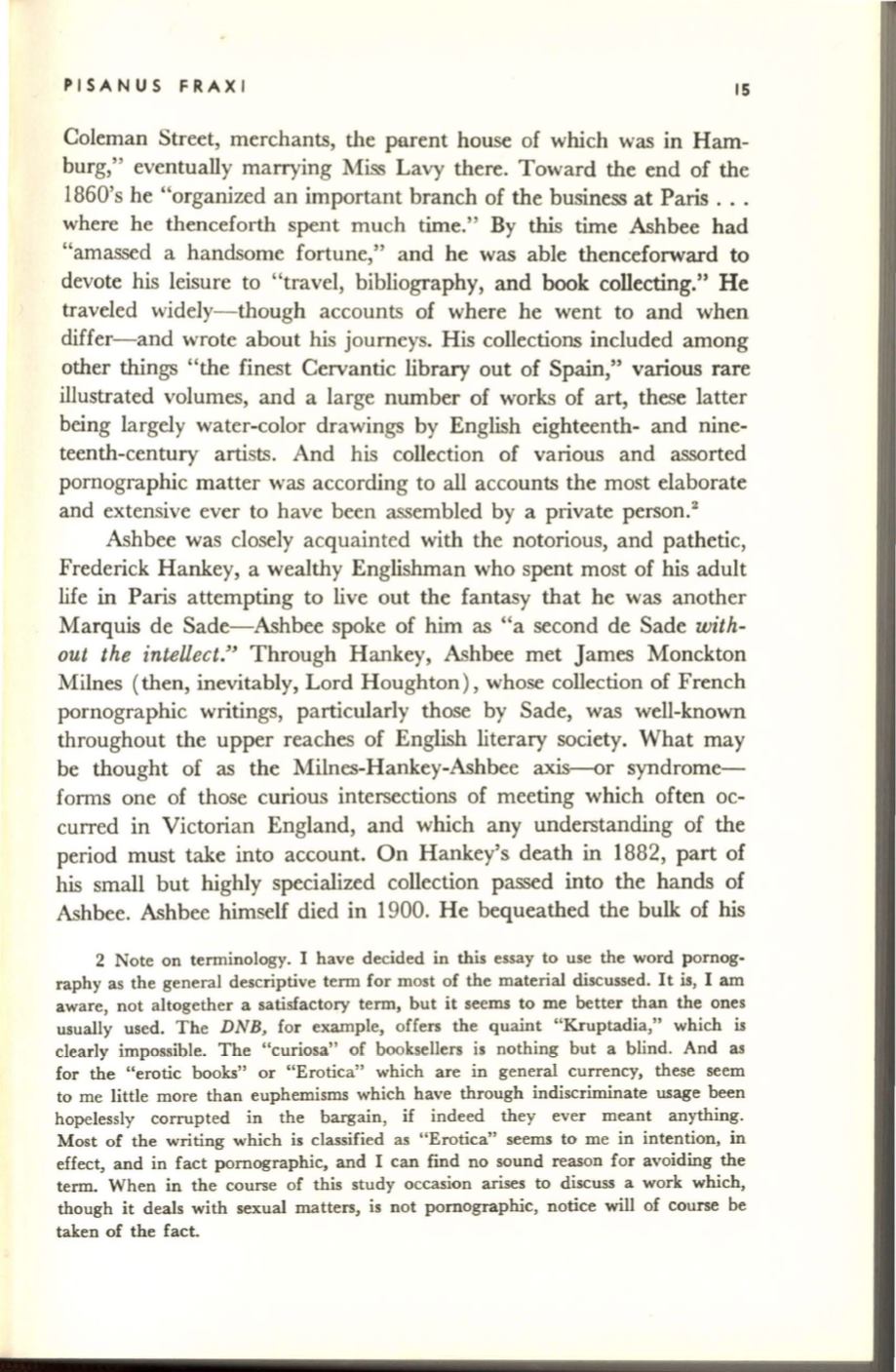
PISANUS FRAXI
15
Coleman Street, merchants, the parent house of which was in Ham–
burg," eventually marrying Miss Lavy there. Toward the end of the
1860's he "organized an important branch of the business at Paris ...
where he thenceforth spent much time." By this time Ashbee had
"amassed a handsome fortune," and he was able thenceforward to
devote his leisure to "travel, bibliography, and book collecting."
He
traveled widely- though accounts of where he went to and when
differ- and wrote about his journeys. His collections included among
other things "the finest Cervantic library out of Spain," various rare
illustrated volumes, and a large number of works of art, these latter
being largely water-color drawings by English eighteenth- and nine–
teenth-century artists. And his collection of various and assorted
pornographic matter was according to all accounts the most elaborate
and extensive ever to have been assembled by a private person.
2
Ashbee was closely acquainted with the notorious, and pathetic,
Frederick Hankey, a wealthy Englishman who spent most of his adult
life in Paris attempting to live out the fantasy that he was another
Marquis de Sade-Ashbee spoke of him as "a second de Sade
with–
out the intellect."
Through Hankey, Ashbee met James Monckton
Milnes (then, inevitably, Lord Houghton) , whose collection of French
pornographic writings, particularly those by Sade, was well-known
throughout the upper reaches of English literary society. What may
be thought of as the Milnes-Hankey-Ashbee axis--or syndrome–
forms one of those curious intersections of meeting which often oc–
curred in Victorian England, and which any understanding of the
period must take into account. On Hankey's death in 1882, part of
his small but highly specialized collection passed into the hands of
Ashbee. Ashbee himself died in 1900. He bequeathed the bulk of his
2 Note on terminology. I have decided in this essay to use the word pornog–
raphy as the general descriptive term for most of the material discussed.
It
is, I am
aware, not altogether a satisfactory term, but it seems to me better than the ones
usually used. The
DNB,
for example, offers the quaint "Kruptadia," which is
clearly impossible. The "curiosa" of booksellers is nothing but a blind. And as
for the "erotic books" or "Erotica" which are in general currency, these seem
to me little more than euphemisms which have through indiscriminate usage been
hopelessly corrupted in the bargain, if indeed they ever meant anything.
Most of the writing which is classified as "Erotica" seems to me in intention, in
effect, and in fact pornographic, and I can find no sound reason for avoiding the
term. When in the course of this study occasion arises to discuss a work which,
though it deals with sexual matters, is not pornographic, notice will of course be
taken of the fact.


